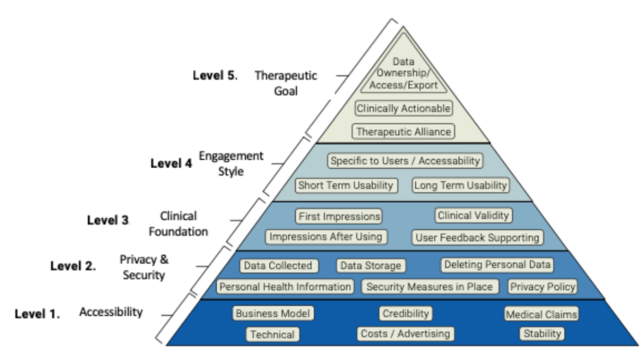Health
Connecting Teens to Mental Health Tools
Learning and teaching about apps is easier than you think.
Posted July 29, 2020
This guest post is written by Aparna Ramakrishnan, the founder and director of Beyond Charity, a non-profit organization focusing on mental health education for kids and teenagers.
Like most teenagers, I spend a lot of time on my phone, but the past couple of months, I have been spending more time on my phone — not because I have been getting more Snapchats, but to explore and evaluate mental health apps. I have been working with Beth Israel Deaconess Medical Center Division of Digital Psychiatry to help create a database of mental health apps that allows anyone to see lots of mental health tools in one place.

Before becoming an app rater, my exposure to mental health apps was limited to the popular apps I heard around my school, such as Headspace. The only other time I was exposed to mental health apps was if there was an ad for them on TV (like the recent ads for Calm). I never imagined that there could be over 10,000 apps in the space — and as I sought out an app for my own use, I realized how difficult it was to find a good one.
The Division of Digital Psychiatry has developed a framework for evaluating mental health apps that involves answering questions around app origin, privacy and security, clinical foundation, usability, and more.

As I started to rate apps, I learned more about what I should value in a smartphone tool. When I first became an app rater, I completed a training consisting of evaluating five apps. My first app took almost an hour for me to rate, as I scoured the privacy policy, app store entry, and app features to thoroughly answer the questions.
My understanding of the process expanded with each new app I rated. An app rater needs to fully understand the underlying framework, recognizing the importance of each question and how it impacts the user. This allows you to better recognize both the good and the bad among the many apps out there.
Rating over 100 mental health apps, I have learned more about them. I was surprised that only a few mental health apps have supporting studies that prove they are effective. Since mental health is part of the medical and psychological fields, I thought that these apps would have studies to support the claims they make about their use.
After months spent evaluating different apps, I've learned that the apps that pop up first are not always the best and that reading the description of the app is not enough. Of all the apps I have rated, some are head and shoulders better than the rest, but the app that I liked the most and suited my needs best was not even in the top 10 of the App Store. This has opened my eyes to show me that the app that is shown first on the app store is not always the right app for you. After reading hundreds of privacy policies, many apps share personal information with third parties and do not protect your data. Now, I make reading the privacy policy a priority, along with going further than the top-rated apps.
Although teens may be tech-savvy, I've learned that education around app evaluation is crucial to help them choose the right piece of technology for their unique needs and preferences. The database provides people with a way to filter through apps and find a tool to support their mental health.
References
Henson P, David G, Albright K, Torous J. Deriving a practical framework for the evaluation of health apps. The Lancet Digital Health. 2019 Jun 1;1(2):e52-4.


